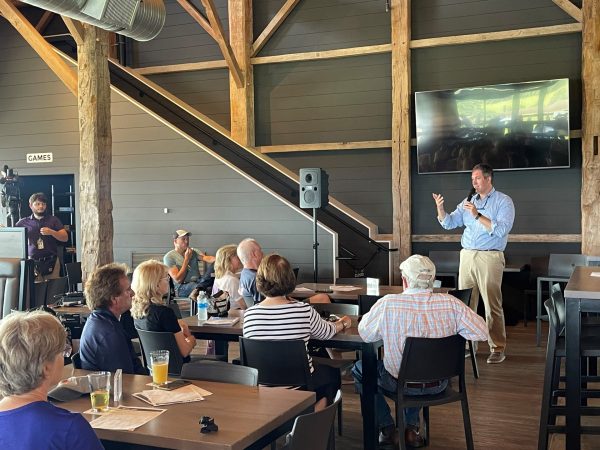The announcement this summer of a $7.4 million grant from the Maryland Office of Statewide Broadband’s Connect Maryland Network Infrastructure Grant Program signifies a stride forward for digital access in Baltimore County. This initiative aims to extend high-speed broadband services to an additional 450 homes nestled in northern Baltimore County.
Building upon prior grant-funded expansions and a collaboration between the County and Comcast to bridge the digital divide, this endeavor is primed to render high-speed internet access to a larger cross-section of Baltimore County residents.
Michael Fried, the head of IT for Baltimore County (and a former RealLIST Engineers and Connectors honoree), described the process as occurring in phases.
“The way we think about it internally, is the sort of phased approach tends to align with the state and federal funding, and because the phases are dictated by the kind of funding, I would say we’re somewhere in the middle with about 1000 or so homes left to connect,” Fried said.
Fried also cited the aspirations laid out in the initial phase of Baltimore County’s connectivity efforts. The county government has a goal to provide high-speed internet access to roughly 99% of households in the areas that were initially without service by the conclusion of 2024.
Moving beyond the physical expansion of infrastructure, this approach acknowledges that genuine digital inclusion extends beyond just connectivity. It encompasses a multi-dimensional strategy that places significant emphasis on skill development and empowerment.
“The way we think about it internally, is the sort of phased approach tends to align with the state and federal funding, and because the phases are dictated by the kind of funding, I would say we’re somewhere in the middle with about 1000 or so homes left to connect,” Fried said.
Fried also cited the aspirations laid out in the initial phase of Baltimore County’s connectivity efforts. The county government has a goal to provide high-speed internet access to roughly 99% of households in the areas that were initially without service by the conclusion of 2024.
Moving beyond the physical expansion of infrastructure, this approach acknowledges that genuine digital inclusion extends beyond just connectivity. It encompasses a multi-dimensional strategy that places significant emphasis on skill development and empowerment.
For example, Fried noted specific outreach with the county’s Department of Aging (which mirrors work that has been done in Philadelphia), among other programs with regional entities.
“Our Department of Aging has training specifically for older adults, which I think has garnered some national recognition,” he said. “Our library system has been engaging in skill building through digital navigators that they have stationed in branches, and we’ve been trying to complement that where we can internally.”
“There’s a workforce and economic development aspect to this as well,” he added. “So we are working on collaborations with the school system and again with the Community College of Baltimore County to discuss how we can expand apprenticeships and how we can actually help people secure employment through these training programs.”
The impact of enhanced connectivity extends far beyond immediate internet usage. According to Technical.ly’s coverage, the demands of a technology-driven era underscore the need for a diverse talent pool capable of driving innovation and progress. Improved internet access stands as a catalyst for diversifying tech talent pipelines.
For Fried, the collaboration with libraries, training partners and internet service providers, as well as the ongoing efforts to provide computers to individuals, are all part of a greater whole.
“I want to distinguish between our digital inclusion work and our connectivity efforts,” Fried said. “We’re pleased to collaborate with the State of Maryland and Comcast in expanding connectivity and fiber. We’re also engaged with Verizon and AT&T — remaining partner-agnostic — with the goal of providing connectivity to our residents. While the phased funding approach [referring to the $7.4 million grant] is certainly positive, there are additional endeavors that tie into a broader digital inclusion initiative and operate on a phased basis. It embodies a more comprehensive approach.”
When digital access becomes democratized, individuals from diverse backgrounds can engage with technology and acquire the necessary skills to pursue careers in the tech industry. This process not only promotes inclusivity but also elevates the overall quality of tech professionals, enriching the sector with a multitude of perspectives and experiences. Baltimore County’s ongoing endeavor to embrace a future of bridging the digital divide could potentially serve as a model for entities seeking to replicate its work in digital inclusion.







